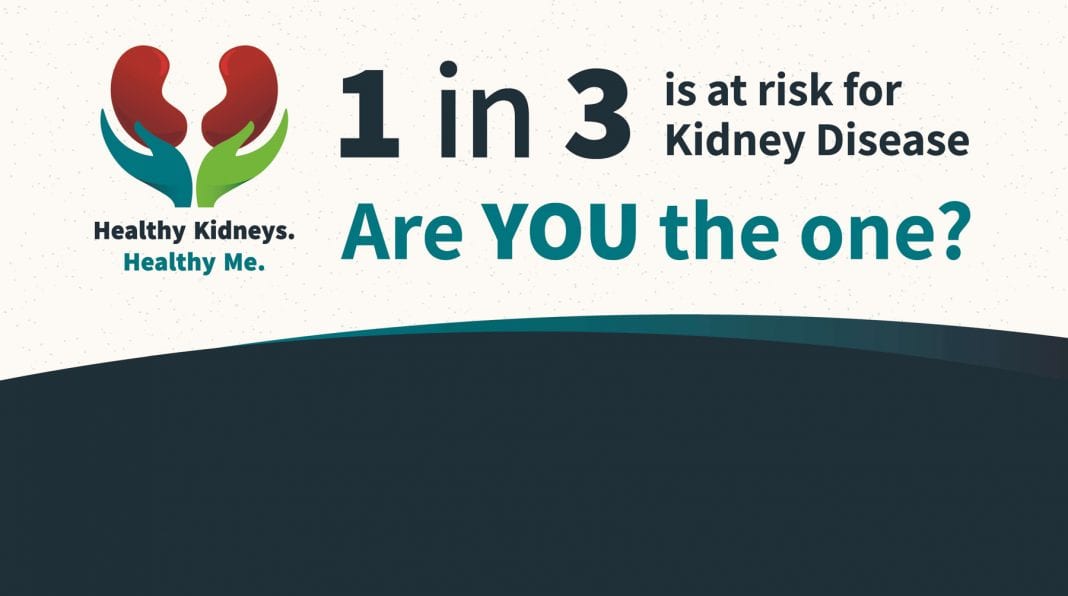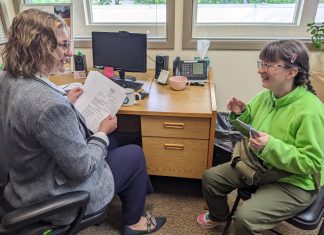Bonnie Wagner was always healthy. She didn’t have diabetes or high blood pressure, and routine blood work always came back normal.
But after a sudden-onset autoimmune disease kept her sick at home for a week in 2014, she quickly wound up hospitalized with kidney failure. After years as a Bellingham dialysis nurse, Wagner herself needed dialysis.
Although she knew what dialysis treatment would mean—hours a day in a chair, having a machine do the filtering work her kidneys couldn’t, leaving her too fatigued to do much of anything—it didn’t stop her from worrying about her future.
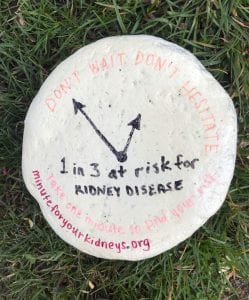
“I had always been a very busy person,” says Wagner, 61. “I didn’t know what my life was going to be like going forward. I didn’t want it to change. I liked my job. I liked being busy.”
Although Wagner’s kidney disease was brought on by sudden illness, it may be surprising to learn that nearly a third of adults in the United States have risk factors for chronic kidney disease (CKD). Furthermore, nearly half of those with severely reduced kidney function aren’t even aware of it—usually until dialysis becomes essential to their survival.
Beginning in March, which is National Kidney Month, Mount Baker Foundation launched a kidney health awareness initiative to help inform Whatcom County residents about the risk factors that lead to kidney disease, what they can do to prevent it, and how they can take part in living kidney donation.
The Risks
Dr. Bill Lombard, former medical director of the Mount Baker Kidney Center and current foundation board member, says that kidneys have many redundancies in their functional capacity, which at first sounds great.
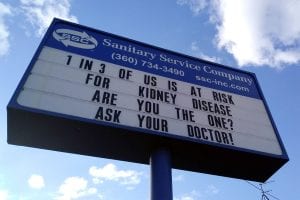
Those redundancies, however, can obscure early signs of kidney failure, meaning someone needs to lose about 50 to 70 percent of overall kidney function before they might be aware of a problem. Many people, Lombard says, wind up in emergency rooms saying they feel poorly, only to learn they have end-stage kidney disease. At this point, a lifetime of dialysis or a new kidney is the only option for treating them.
The primary risk factors for CKD are diabetes and high blood pressure; the less-controlled those conditions are, the greater the risk of developing CKD. Other risk factors include being African-American, Hispanic or Native American, or having a family history of kidney disease. Lombard says the overuse of anti-inflammatory, over-the-counter medications can also increase the risk of kidney failure if used over extended periods in higher doses by those with existing CKD risk factors.
“Minute for Your Kidneys,” a short quiz hosted at the National Kidney Foundation website, is a great resource to examine your personal risk for CKD. If you are at risk, speak to your doctor about properly controlling your risk factors. You can also get a free home urine test kit, allowing you to check albumin levels in urine, the presence of which can suggest kidney function issues.
Living with CKD
For those with CKD, the diagnosis is life-changing.
Dialysis patients visit dialysis centers (Whatcom County has just one) to sit and have their blood filtered for about four hours a day, three days a week. Others—depending on their individual health conditions and life circumstances—can opt for at-home dialysis, which can be in shorter intervals but over more days per week.
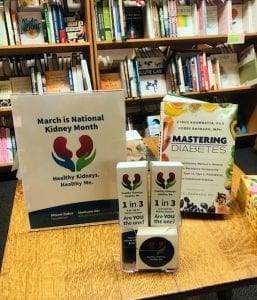
Food and fluid intake is restricted during treatment, and constant close monitoring of fluids and nutrition levels becomes essential around-the-clock. After treatment sessions, many patients feel drained of energy.
“It’s a rigorous process,” Lombard says. “Less than 25% of patients are employed at the initiation of dialysis, a decrease of almost 40% from six months before the onset of their kidney disease. By comparison, 80-85% of adults in the general population with similar age are employed. It’s a big deal.”
Angela Krzysiek, a committee member and local social worker who works with people on dialysis, likens treatment to having a part-time job. In addition to treatment time, there’s the pre-and-post prep time for treatment, plus time for transportation to and from a dialysis center. For the majority of patients who can no longer work, Krzysiek helps them navigate unemployment and disability options.
Often, dialysis patients accustomed to working full time may find it necessary to reduce their hours or even find a less active job, says Wagner. Although Wagner did her dialysis from home in the Skagit County community of Concrete, her life changed dramatically. She couldn’t drive more than 15 minutes without wanting to fall asleep, meaning her long drives to Bellingham for 10-hour nursing shifts came to a permanent end. Her pastime of frequent gardening took a backseat to rest.
Everyone responds differently to dialysis, of course, but Wagner says she’s seen only two patients who weren’t greatly affected by treatment in her 20 years as a nurse. Fortunately for Wagner and others, dialysis days can be rendered past-tense by kidney transplants.
How to Save a Life
Like most organ transplants in the U.S., there are more people needing kidneys than donating them. Lombard says over 100,000 people nationwide are on kidney transplant lists, and only about 21,000 transplants occur annually. The average wait time is three to four years. The shortage of kidneys for transplantation continues to be a public health crisis. Annually, nearly 5,000 people on the transplant waiting list die without getting a transplant. Also of note: while 90% of American adults support organ donation, only 60% have signed up to be an organ donor. If interested, you can sign up here.
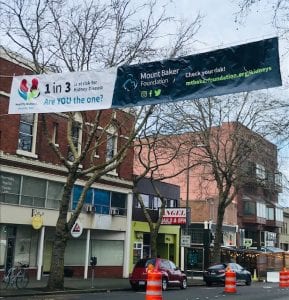
Kidneys can be donated from either living donors—who need to have matching blood types but otherwise don’t have to be related—or from recently deceased individuals who are organ donors. Living donor transplants can be scheduled, while deceased kidney transplants must be conducted as soon as possible.
And transplants aren’t just for those on dialysis. Getting a new kidney before your original kidney function degrades to dialysis-levels is the ideal way to treat kidney failure, he says, as those organs typically function better and last longer.
Wagner received a new kidney, from a non-live donor, in 2017. She was on a donor list for the average two to three years for her blood type, she says, and her recovery was somewhat slower than what many people experience.
Although many things have gotten better, she still has to watch her sodium intake meticulously and take post-transplant, anti-rejection medications the rest of her life. While Medicare paid for her dialysis and transplant surgery, savings and her husband’s insurance helped cover everything else.
Not everyone is so lucky, however, and post-transplant costs can be significant. Luckily, legislation was passed in December 2020 directing Medicare to cover expensive anti-rejection medications.
For those considering donating a kidney, Krzysiek says calling a transplant center and inquiring is the best place to start. The results of live kidney donation are gifts to both donor and recipient, she adds.
“A recipient of a kidney is so incredibly grateful,” she says. “and living donors are so grateful for helping the recipient live a much better life. Two individuals on Mount Baker Foundation’s Kidney Health Awareness committee are living kidney donors.”
Lombard has seen the same things.
“The living donors that I know—and I’ve seen a number of them over the years—they say they feel like they’ve had the biggest gift,” he says. “For them, that was the most incredible thing they’d ever done in their life.”
All in all, those associated with the Mount Baker Foundation’s campaign hopes anyone at risk of CKD will be more involved in properly managing their health and healthcare. The difference can make a world of difference to you and your kidneys.
“Ask questions when you go to the doctor,” Krzysiek says. “Pay attention to your lab values. Know what you can do to improve your health conditions.” And, take the “Minute for your Kidneys” test.
Sponsored




























